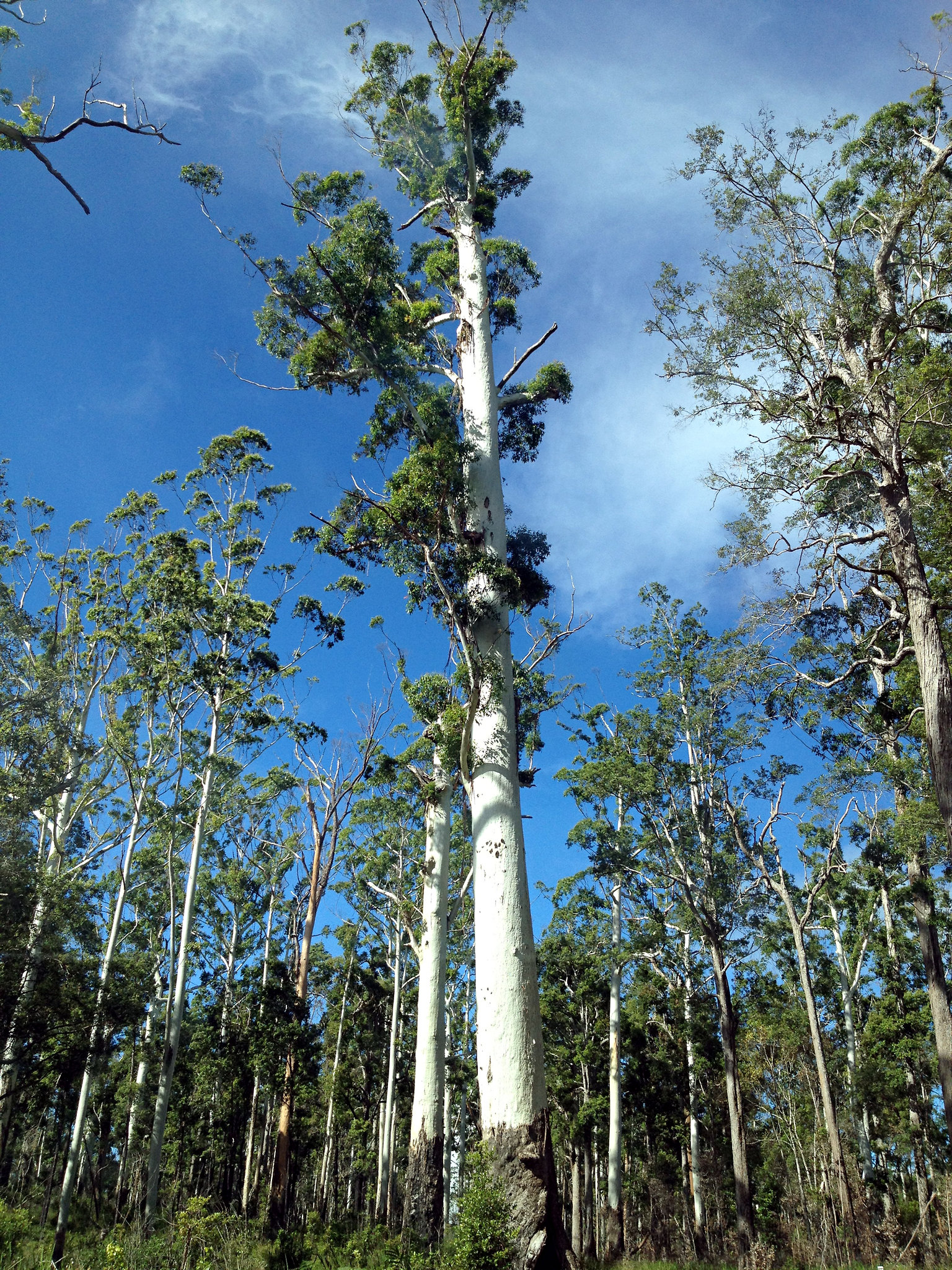Eucalyptus
- Family: Myrtaceae
- Local Names: Amharic (key bahir zaf), Arabic (ban,kafur), Burmese (pyilon-chantha), English (long beak eucalyptus,murray red gum,red gum,river gum,river red gum,red river gum), French (eucalyptus rouge,eucalyptus), German (Rotgummibaum,roter eukalyptus)
Description
Eucalyptus trees can grow between 10 to over 300 feet (3 to 90 meters) tall, with trunk diameters reaching up to 7 feet (2 meters). Known for their rapid growth, these trees can add 6 to 10 feet (2 to 3 meters) annually under ideal conditions. Their mature leaves typically measure 4 to 12 inches (10 to 30 cm) in length. Eucalyptus trees have a potential lifespan of 50 to 400 years, with some species flowering as early as 2 to 3 years after planting.
Ecology
Its natural distribution covers most of Australia’s mainland. Under natural conditions, E. camaldulensis occurs typically along watercourses and on floodplains. Very occasionally in southern Australia it extends to hills or ranges, usually in open forest and woodland. It grows under a wide range of climatic conditions, from temperate to hot and from humid to arid zones. The length of the dry season may vary from 0 to 8 months, and the rainfall distribution from a winter maximum in southern regions to a monsoon type with summer rains in northern areas.
Native range
Australia
Tree Management
1. Seedling growth may exceed 3 m per year for well-adapted provenances on favourable sites. Spacing varies with management system, from community planting around homes, villages and roads to closely spaced commercial plantations, and depends on the end products required. Application of 100 g of NP or NPK (3:2:1) fertilizer to each tree at planting to assist establishment and early growth is common. Poor competition ability with weeds and the development of an open crown necessitate frequent weeding, up to 3 times a year, until the canopy closes 3-5 years after planting. A thinning of less than 700 stems/ha at 5 years provides posts, poles, fuelwood and pulpwood, leaving the better trees for the production of other products, such as sawn timber after 10 years. Coppices readily. Crown die-back during the dry season as a result of boron deficiency is prevalent in parts of Africa, Asia and South America.
2. Orthodox storage behaviour for 3-10 years; viability maintained for 4 years in hermitic storage at room temperature; viability maintained for several years in hermitic storage at 3 deg. C with 6-10% mc. A fully grown E. camaldulensis tree may produce a million or more seeds annually, and may continue so for a century (Lars Schmidt, 2000). There are 700 000-800 000 seeds/kg.
3. Its natural distribution covers most of Australia’s mainland. Under natural conditions, E. camaldulensis occurs typically along watercourses and on floodplains. Very occasionally in southern Australia it extends to hills or ranges, usually in open forest and woodland. It grows under a wide range of climatic conditions, from temperate to hot and from humid to arid zones. The length of the dry season may vary from 0 to 8 months, and the rainfall distribution from a winter maximum in southern regions to a monsoon type with summer rains in northern areas.
4. Seeds can be collected from mature trees before the capsules dehisce. No pretreatment is necessary; the optimum temperature for germination is 32 deg. C, but a wide range is tolerated. The germination rate is generally high and can reach almost 100%. The seeds germinate in 4-15 days and attain size ready for planting out in 4-6 months, depending on temperature and watering. Germination is epigeal, and seedlings have bilobed cotyledons. Seedlings are 1st planted in containers in the nursery. E. camaldulensis is suited to mass vegetative propagation. Cuttings from juvenile shoots root readily in about 30% of the genotypes.
Timber
Because of its great strength and good durability, the wood is suitable for many structural applications, for example, railway sleepers, poles, posts, floorings, wharves, ship building and heavy construction. The density of the wood is 900-980 kg/cubic m at 12% mc. In Pakistan, it is a raw material for the chipboard industry. Estimates show that in 1993, 800 tonnes of raw material was from this species (Charles and Naughton, 1994).
Shade or Shelter
Eucalyptus is widely planted for shade and shelter. In Sudan it is planted to protect crops from blowing sand.
Medicine
The oils are used as an inhalant with steam and other preparations for relief of colds and influenza symptoms. Because of its refreshing odour and its efficiency in killing bacteria, the oil is also used as an antiseptic.
Gum or Resin


